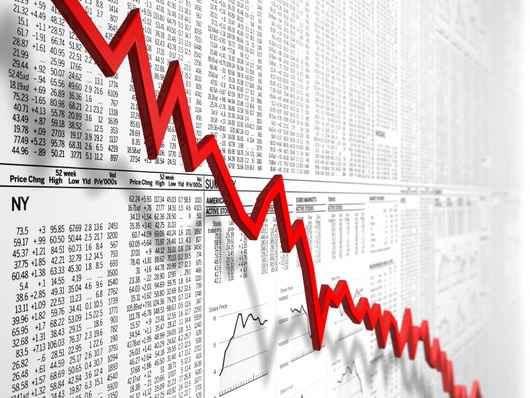ISLAMABAD: Ministry of Finance, which is going through an uncertain situation in the absence of its minister for over 23 days now, has claimed that the economic situation was not as grave as is being portrayed in media. It says there has been criticism lately, mentioning the weakening of macroeconomic stability in the context of current and fiscal accounts’ deficit in 2017.
In this regard, it is necessary to remind that the present government inherited a fragile economy characterised by low investments, high inflation, low GDP growth, high fiscal deficit, low Tax to GDP ratio, low level of foreign exchange reserves and a looming external debt default with rising power sector circular debt and severe energy crisis.
A statement of the ministry issued on Wednesday says, the government soon after assuming responsibilities, launched a homegrown programme of economic reforms and in the period of four years achieved a remarkable economic turnaround which is recognised by the international community. GDP growth of 5.3 per cent in last fiscal is the highest in the last ten years. Tax-to-GDP ratio has increased from 10.1 per cent in 2013 to 12.5 per cent in 2017. The fiscal deficit has been reduced from 8.2 per cent in 2013 to 4.6 per cent in 2016. Fiscal deficit in FY17 increased to 5.8 per cent and in 2016-17 increased by 1.6 per cent of GDP (from 4.2 per cent to 5.8 per cent). Major contributors were provincial deficit 0.9 per cent, higher project aid 0.4 per cent and FBR revenue collection 0.5 per cent of GDP.
FBR tax collection registered a cumulative growth of 77 per cent in 2013-2017. Size of development spending has increased by 300 per cent in four years. Inflation has been brought down in the range of 4 – 5 per cent in FY17 from the average of 12 per cent between 2008 and 2013. Policy rate is at a historic low of 5.7 per cent down from 9.5 per cent in FY13.
Pakistan’s foreign exchange reserves which were $ 11.02 billion while SBP reserves were $ 6 billion in June 2013, presently reserves are at a healthy level of about $ 19.8 billion while SBP reserves are at $ 13.6 billion.
Current account deficit was recorded at $ 12.4 billion during FY17 as compared to $ 4.9 billion in FY16. It was mainly due to increase in imports of machinery, industrial raw material and petroleum products. These imports are enhancing the productive capacity of the economy for higher output and exports in future.
As for stagnancy in exports, it was largely due to global economic conditions, low commodity prices and severe bottlenecks in the energy and infrastructure sectors of the economy as well as adverse security conditions in the country. Workers’ remittances which remained stagnant last year due to adverse economic conditions in the Middle East, stringent USA regulations and impact of Brexit, have returned to growth zone. However, remittances have returned to growth zone showing an increase of 2.3 per cent during July-October 2017.
GDP growth target for 2017-18 and beyond is above 6 per cent per annum. Economic data for Q1 FY2018 (July-September) shows a strong performance of the economy and reversal of some of the negative trends of past in external and fiscal situation. Exports, which registered a negative growth of 1.3 per cent in first half of 2016-17, have returned to growth zone. Exports during July-September FY2018 posted a healthy growth of 12.4 per cent as compared to the same period last year.
Imports during the first quarter increased by 25 per cent, however, month-on-month basis growth in imports have begun to decelerate. Imports increased by 51.6 per cent in the month of July which decelerated to 9 per cent in August and 22 per cent in September.
Current account deficit for the period July-October 2017 shows an improvement of 4 per cent as compared to March-June period of last year. Evidently, the recent pressure on the external account is transitory and is likely to peak out this year as various energy and infrastructure projects are completed by June 2018.
FDI inflow during July-October FY 2018 was $ 940 million compared to $ 539 million during the same period last year, registering a massive growth of 74.4 per cent. Tax revenue collection in Q1, 2017-18 increased by 20 per cent. Fiscal deficit during Q1 stood at a manageable level and was lower than the same period last year, signalling that fiscal consolidation is on track this year.
LSM growth, during Q1 2018, increased 8.4 per cent against 1.8 per cent last year. Increased manufacturing output is backed by low-interest rate environment and low inflation. Cotton output this year is projected at 12.6 billion bales which are 17.8 per cent higher than last year.
Clearly, the economic indicators for Q1 FY18 are reflecting the strong performance of the economy and reversal of some of the negative trends which were witnessed in FY17. More significantly, GDP growth target of 6 per cent this year seems on track and may even be surpassed. Therefore despite challenges, S&P in its rating report on October 25, reaffirmed Pakistan ‘B’ short-term and long-term ratings with a stable outlook and acknowledged that Pakistan’s external account challenges are short-term and will recede within two years’ time.




